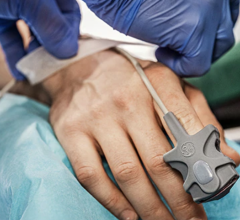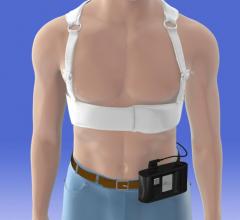
April 28, 2010 – A Web-based platform designed to share electrocardiogram (ECG) information between emergency medical services (EMS) and hospitals now connects 12-lead devices from various manufacturers. The new Version 4.1 of the Physio-Control Lifenet system includes the Lifenet Adapter, allowing EMS to transmit ECGs from defibrillator-monitors made by numerous vendors, instead of being limited to Physio-Control devices.
The interface allows hospitals to standardize the management of chest pain cases regardless of the monitoring equipment used by EMS in the field.
The system helps communities set up systems for earlier detection of patients experiencing ST-segment elevation myocardial infarction (STEMI). Lifenet allows time-critical prehospital ECG transmissions so physicians can review them prior to the patient’s arrival. If an STEMI is identified, the hospital can determine where to route the patient, and whether to activate a catheterization laboratory.
Version 4.1 introduces five products developed in response to customer feedback. They include:
• Lifenet Adapter – Enables data from multiple 12-lead management systems to be routed through the Lifenet system, allowing hospitals to standardize on one system to receive patient data from the field.
• Lifenet Connect – Allows data to be sent automatically from Lifepak monitor/defibrillators directly into CODE-STAT, Physio-Control’s post-event review software. Lifenet Connect sends this data via the Internet while the LIFEPAK device is still in the ambulance, thereby providing increased operational efficiency.
• Lifenet Export – Enables data to be exported from the Lifenet system into hospital information systems.
• Lifenet Archive – Permits storage of 12-lead ECG and vital sign reports on a local desktop computer.
• Lifenet Asset – Provides users with a web-based system to track Lifepak device inventory. Lifepak service and maintenance information is downloaded to and accessible from the Lifenet system, allowing EMS personnel to spend less time on administrative duties and focus more on saving lives.
About STEMI
The American Heart Association (AHA) estimates that close to 400,000 people in the United States experience STEMI every year. Studies show that when door-to-balloon (D2B) time is 90 minutes or less, patient outcomes significantly improve, and hospital stays are shorter (Journal of the American College of Cardiology, JACC 2009). The use of prehospital 12-lead ECGs plays a key part in reducing D2B times. A recent update to guidelines from the American College of Cardiology (ACC) and the American heart Association (AHA) emphasize the need for developing STEMI systems of care to increase the number of patients with timely access to appropriate treatment for STEMI (ACC/AHA Guidelines for the Management of Patients with ST-Elevation Myocardial Infarction, 2009).
For more information: www.physio-control.com


 July 28, 2023
July 28, 2023 








